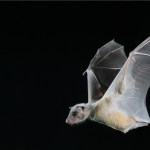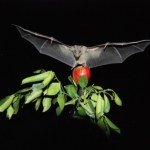place cells
Not everyone gets their research written about by this week’s Nobel Prize winners:
All mammals face the challenge of navigating in complex, three-dimensional (3D) environments, whether they are swinging from branch-to-branch in forests or burrowing underground tunnels. How does the brain maintain a sense of place and direction in 3D? In a beautiful study published on Nature's website today, Finkelstein et al. report that bats have an internal neural compass that tracks direction in 3D during both surface locomotion and flight.
That’s from Prof. May-Britt Moser in Nature’s “News and Views.”…
When we navigate through our environment, do we track mostly in two dimensions or in three? Clearly, we can move in all three dimensions, but does our internal map relate to the vertical direction in the same way as it does to the horizontal axes on the ground?
That question has not yet been definitively answered, but recent research on flying bats shows us what three-dimensional navigation looks like in the brain.
It turns out that fruit bats also mostly navigate in two dimensions, since quite a bit of their flying time involves getting from their caves straight to their favorite fruit…
USING an inventive new method in which mice run through a virtual reality environment based on the video game Quake, researchers from Princeton University have made the first direct measurements of the cellular activity associated with spatial navigation. The method will allow for investigations of the neural circuitry underlying navigation, and should lead to a better understanding of how spatial information is encoded at the cellular level.
In mice, spatial navigation involves at least four different cell types located in the hippocampus and surrounding regions. Place cells…

